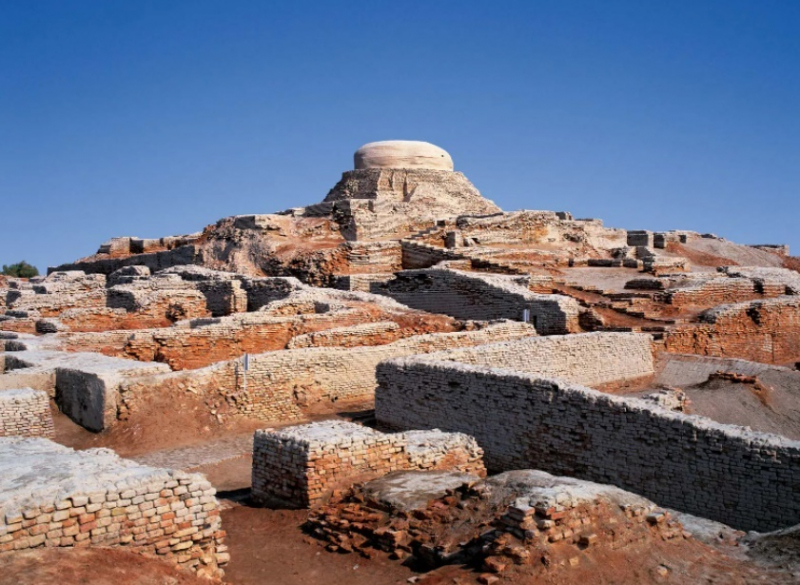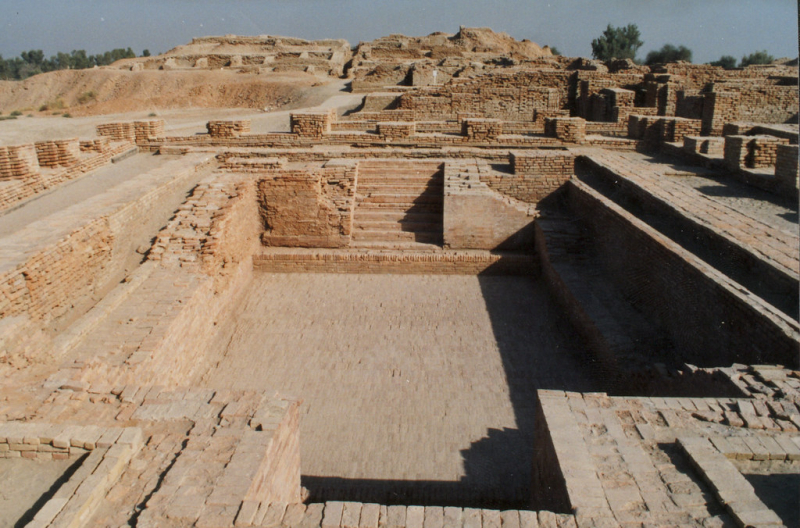Mohenjo-Daro
Mohenjo-daro is an archaeological site in Pakistan's Sindh region. It was one of the major communities of the ancient Indus Valley Civilisation, built circa 2500 BCE, with characteristics such as uniform bricks, street grids, and covered sewerage systems. It was one of the world's first great towns, existing with ancient Egypt, Mesopotamia, Minoan Crete, and Norte Chico. As the Indus Valley Civilization faded in the 19th century BCE, Mohenjo-daro was abandoned, and the site was not rediscovered until the 1920s. Significant excavation has taken place at the city's site since it was named a UNESCO World Heritage Site in 1980.
Mohenjo-daro was constructed about the 26th century BCE. It was one of the greatest towns of the ancient Indus Valley Civilization, also known as the Harappan Civilization, which arose from the prehistoric Indus civilisation circa 3,000 BCE. The Indus Civilization spanned much of what is now Pakistan and North India, spanning westwards to the Iranian border, south to Gujarat in India, and northwards to a Bactria outpost, with significant urban sites at Harappa, Mohenjo-daro, Lothal, Kalibangan, Dholavira, and Rakhigarhi. Mohenjo-daro was the most advanced metropolis of its day, with incredible civil engineering and urban design. Mohenjo-daro was abandoned after the Indus civilization collapsed approximately 1900 BCE.
Mohenjo-daro was designed with rectilinear buildings organized on a grid plan. The majority were constructed of fired and mortared brick, with some incorporating sun-dried mud-brick and wooden superstructures. The covered area of Mohenjo-daro is estimated at 300 hectares.
Location: Larkana District, Sindh, Pakistan












